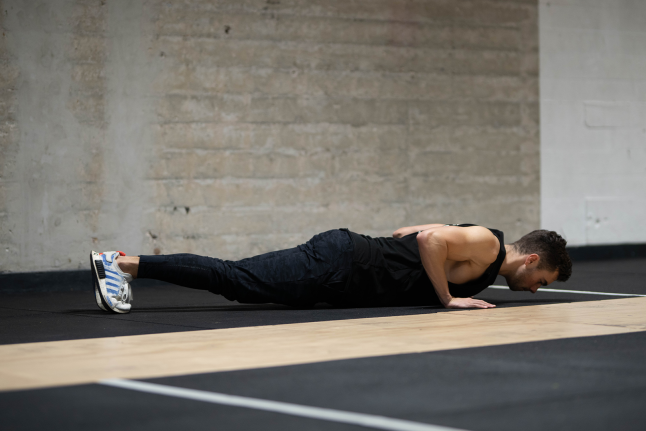
Introduction:
In a world where sedentary lifestyles are becoming the norm 3 Step Exercise, it’s more important than ever to find ways to stay active and prioritise our health. One simple yet highly effective way to do this is by mastering the 3 step exercise routine. This article will guide you through the process of incorporating this routine into your daily life, helping you reap the countless benefits of regular physical activity.
3 Step Exercise Routine: A Comprehensive Guide
Understanding the Importance of Daily Exercise
Regular physical activity is essential for maintaining overall health and well-being. From improving cardiovascular health to boosting mood and reducing stress, the benefits of exercise are truly endless. By committing to a daily 3 Step Exercise routine, you can significantly enhance your quality of life and reduce your risk of chronic disease.
Getting Started: Preparing for Your Daily Routine
Before diving into your 3 step exercise routine, it’s important to set yourself up for success. Create a dedicated space in your home where you can comfortably perform your exercises without distractions. Invest in proper workout attire and footwear to ensure comfort and support during your routine. Additionally, consider enlisting the support of a workout buddy or accountability partner to help you stay motivated and accountable.
Step 1: Cardiovascular Exercise
The first step in your daily routine is cardiovascular exercise, which helps to strengthen the heart and lungs while improving overall endurance. Examples of cardiovascular exercises include brisk walking, jogging, cycling, swimming, and dancing. Aim to engage in at least 30 minutes of moderate-intensity cardio 3 Step Exercise each day to reap the full benefits.

Step 2: Strength Training
Incorporating strength training into your routine is essential for building lean muscle mass, increasing metabolism, and improving overall strength and stability. Focus on targeting major muscle groups such as the chest, back, legs, and core through exercises such as squats, lunges, push-ups, and planks. Aim to perform 2-3 sets of 8-12 repetitions for each exercise, gradually increasing the weight or resistance as you progress.
Step 1: Morning Stretching Routine
Starting your day with a gentle stretching routine is a fantastic way to awaken your body and prepare it for the day ahead. Stretching helps improve flexibility, increases blood flow to your muscles, and can even alleviate feelings of stiffness or tension. Try incorporating movements like neck rolls, shoulder stretches, and hamstring stretches into your morning ritual to kick start your day on the right foot.

Step 2: Cardiovascular Exercise
Cardiovascular exercise, such as brisk walking, jogging, or cycling, is key to improving your heart health and increasing your stamina. Aim for at least 30 minutes of moderate-intensity cardio each day to reap the maximum benefits. Not only will cardiovascular 3 Step Exercise help you feel more energised, but it can also improve your mood and reduce stress levels.
Step 3: Strength Training
Incorporating strength training into your daily routine is essential for building muscle mass, increasing bone density, and boosting your metabolism. Body weight exercises like squats, push-ups, and lunges are excellent options for strength training at home, requiring minimal equipment. By challenging your muscles regularly, you’ll notice an increase in your overall strength and vitality.
Importance of Consistency
While one workout session can provide immediate benefits, it’s the consistency of exercise that leads to lasting results. Make a commitment to yourself to prioritise physical activity each day, even on days when you don’t feel like it. Consistency is key to reaping the full rewards of regular exercise and maintaining your newfound energy levels.
Nutrition and Hydration
In addition to exercise, paying attention to your nutrition and hydration is crucial for feeling active and energised. Fuel your body with a balanced diet rich in fruits, vegetables, lean proteins, and whole grains, and be sure to drink plenty of water throughout the day to stay hydrated. Eating well-rounded meals and staying hydrated will provide your body with the nutrients it needs to power through your workouts and keep you feeling revitalised.
Rest and Recovery
While exercise is essential for overall health, so is rest and recovery. Allow your body time to recover between workouts by incorporating rest days into your routine. Use rest days as an opportunity to relax, recharge, and allow your muscles to repair and grow stronger. By prioritising rest and recovery, you’ll reduce your risk of injury and prevent burnout, ensuring you can maintain your exercise routine for the long haul.
Step 1: Warm-up
Before diving into rigorous physical activity, it is crucial to prepare your body adequately. Warming up is the first step in any 3 Step Exercise routine. It gradually increases your heart rate and loosens up muscles, reducing the risk of injury during the main workout.
A typical warm-up session includes dynamic stretches, light cardio 3 Step Exercise, and mobility drills. Dynamic stretches like arm circles, leg swings, and torso twists help improve flexibility and range of motion. Light cardio activities such as jogging in place or jumping jacks elevate heart rate and enhance blood flow to muscles, priming them for more intense exercise.
Step 2: Main Workout
Once your body is warmed up, it’s time to engage in the main workout. The main workout should encompass a combination of cardiovascular exercises, strength training, and flexibility exercises. Incorporating variety into your workouts not only prevents boredom but also ensures that different muscle groups are targeted for comprehensive fitness.
Cardiovascular exercises like running, cycling, or swimming elevate heart rate, burn calories, and improve endurance. Strength training exercises such as weightlifting, body weight exercises, or resistance band workouts help build muscle strength and tone. Flexibility exercises like yoga or Pilates enhance flexibility, balance, and posture.
Step 3: Cool-down
After completing the main workout, it’s essential to allow your body to gradually return to its resting state. Cool-down exercises help lower heart rate, reduce muscle soreness, and promote relaxation. Skipping the cool-down phase can lead to muscle cramps and stiffness.
Cool-down activities may include static stretching, foam rolling, or gentle yoga poses. Static stretches target major muscle groups and promote flexibility. Foam rolling helps release tension in muscles and alleviates soreness. Gentle yoga poses encourage deep breathing and relaxation, aiding in stress reduction and recovery.
Tips for Mastering the 3 Step Exercise Routine
- Consistency is key: Stick to your exercise routine consistently to see significant improvements in fitness and overall well-being.
- Listen to your body: Pay attention to any signs of discomfort or fatigue during exercise and adjust intensity accordingly to prevent injuries.
- Set achievable goals: Set realistic and attainable fitness goals to stay motivated and track progress effectively.
Incorporating the Routine into Your Daily Life
Finding the right time to exercise is crucial for consistency. Whether it’s early morning, during lunch breaks, or in the evening, choose a time that fits your schedule and energy levels. Additionally, making 3 Step Exercise enjoyable by incorporating activities you love or exercising with friends can make it feel less like a chore and more like a rewarding experience.
Conclusion
Incorporating regular 3 Step Exercise into your daily routine doesn’t have to be complicated. By following a simple three-step exercise regimen consisting of stretching, cardiovascular exercise, and strength training, you can increase your energy levels, improve your overall fitness, and enhance your quality of life. Remember to stay consistent, prioritise nutrition and hydration, and listen to your body’s needs as you embark on your journey to feeling more active and alive.

